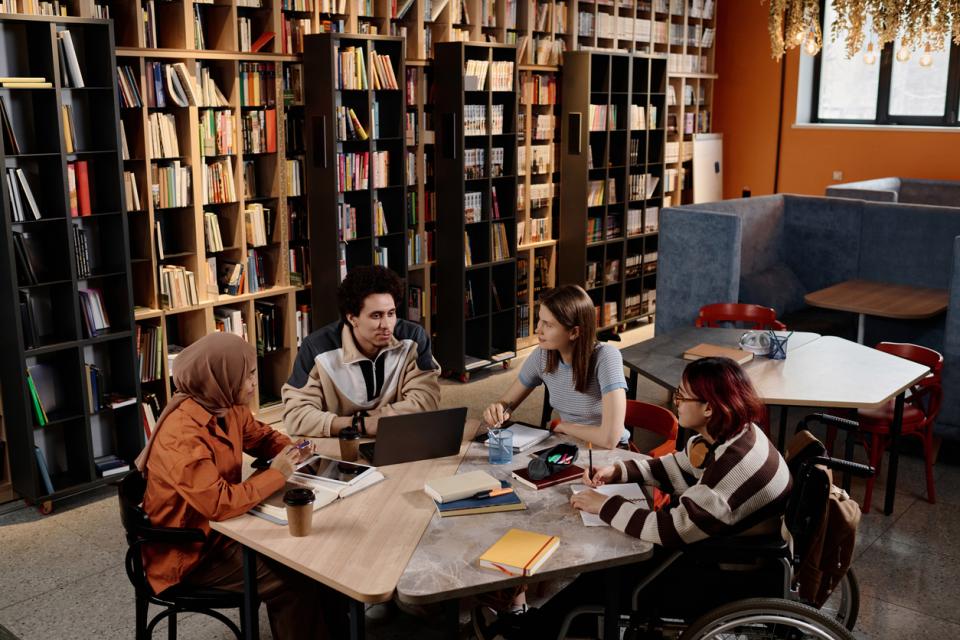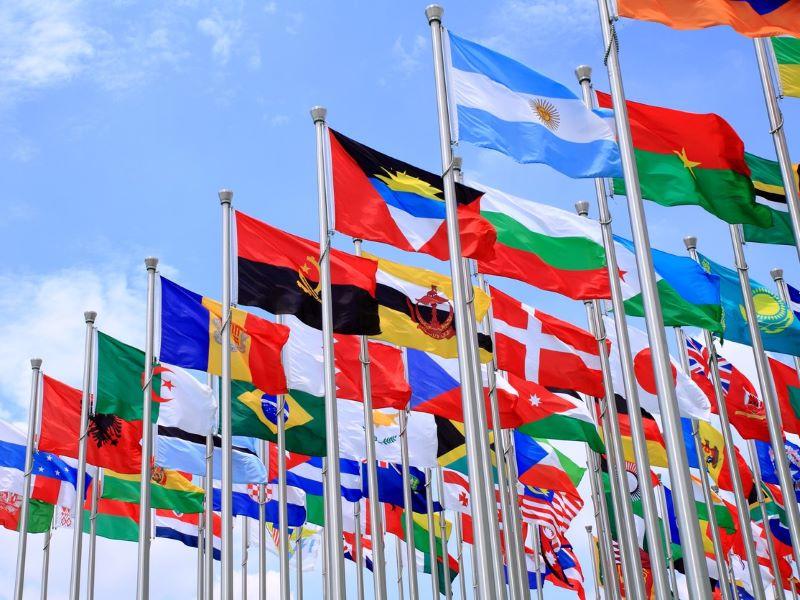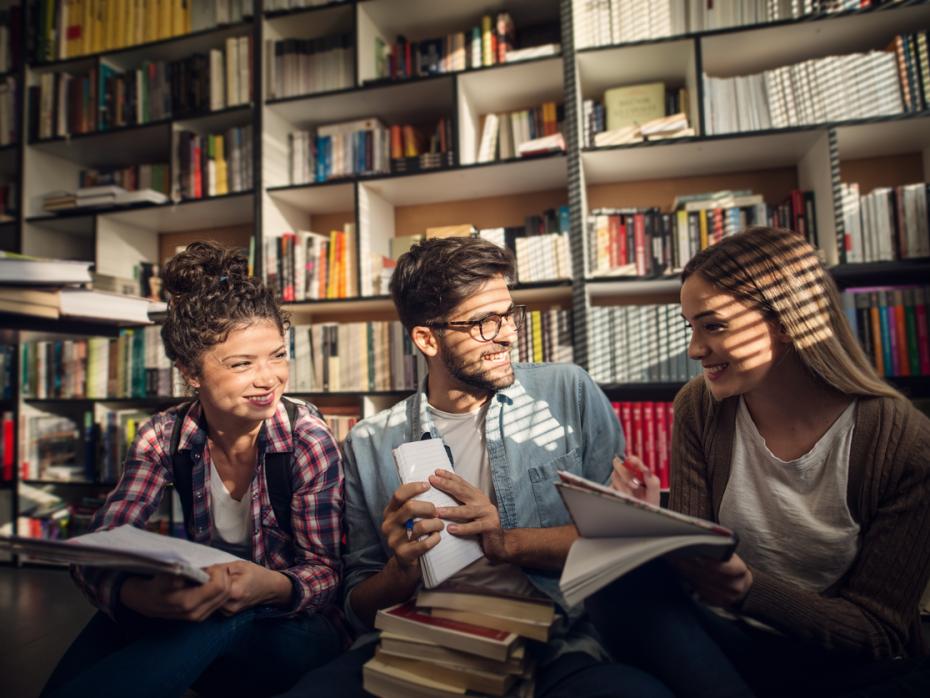For students from diverse social, cultural and economic backgrounds, the classroom can either mirror the hierarchies and disparities that they experience in the world, or challenge them. For students to be able to challenge them, we as educators must provide them with opportunities by intentionally removing barriers that restrict agency and belonging and limit students’ voices. Designing for this means enabling every student to participate as an equal contributor to meaning-making and an active agent in knowledge creation.
Below, I outline how educators can embed some connective practices in their courses, and why doing so is essential for unity in polarised times.
Learning as a collective, democratic process
I have witnessed real connection happening in the classroom when students work together on shared real-world challenges. It is beautiful to watch difference become strength as they learn from what each has to bring to their collaboration.
However, group work can sometimes fall short of modelling real collaboration. As leadership coach Tristana Humada points out, it can be very tempting to assume that experiential learning is automatically inclusive. I’ve witnessed that competitive, high-pressure group challenges and activities often reward more extroverted, neurotypical behaviour. I’ve seen and received feedback that left some students sidelined. It led me to start incorporating very practical community-building and trust-building practices into the programmes that I design. Some of my go-to activities are below:
- Check-in circles to start every session: they offer an opportunity for students to briefly share how they are arriving emotionally or socially. Especially when modelled first by the educator, a check-in normalises vulnerability and sends a signal that in that room, the whole person, not only their ideas or intellect, is welcome.
- Designing in moments of peer appreciation encourages recognition of one another and fosters generosity. In one of my programmes, learners closed each weekly session by writing short appreciation notes to a peer. In larger classrooms, peer appreciation can be scaled by using simple structures such as posting appreciations on a shared digital board, pairing off in the final five minutes of a class to acknowledge one another or adding a short “acknowledgement page” to group project submissions. Even small rituals like these make generosity and peer learning visible and sustainable at scale.
- Rotating conversation facilitators allows more reserved students to have structured (and planned) opportunities to lead. For example, facilitator guides the flow of dialogue; summariser captures and restates key points; connector links what’s being said to earlier comments or themes.
This is especially effective in rooms of diverse personalities, cultures and contexts when it comes to speaking out loud or raising a hand. In a multicultural cohort I worked with, we let students volunteer for these roles in advance so reserved participants could come prepared, softening how intimidating this may be and turning it into an opportunity to lead. I saw students who rarely spoke begin to guide dialogue with confidence, while others learned to step back and listen.
It’s easy to see diversity as a finishing line or a checkbox. Forcing collaboration and teamwork while ignoring and avoiding tensions, contradictions and complexity does not lead to rich learning. Pluralism is a skill that educators can master. It is the practice of interacting with people across differences with courage, curiosity and respect. Pluralism can be learned and practised, just like any other skill.
I learned how to facilitate the tough polarised conversations or activities and have all parties leave with deep learning and growth. One way of doing this is by normalising disagreement in the classroom, helping students understand that learning can still happen through tension. In addition, I name the polarisation explicitly by saying, “I hear strong differences in perspectives here, and that’s exactly what we should learn from.” This helps to soften and lower defensiveness.
- Resources on equity, diversity and inclusion in higher education
- Spotlight guide: What next for EDI? Protecting equality of opportunity in HE
- Spotlight guide: Dealing with division - the polarised university
Another helpful practice is being ready with supportive prompts for students to help them name what they are feeling during or after difficult cross-difference interactions. A carefully timed “What are you noticing in yourself right now?” changes the conversation from debate to reflection and allows students to re-engage with empathy.
This is also where designing for psychological safety comes in. Psychological safety can be developed gradually and even small intentional rituals can facilitate this process, such as:
- Starting with “What’s one word for how you’re showing up today?”
- A shared energising stretch or breath
- Allowing for more anonymous input with sticky notes.
These micro-moments form a culture of collective care in my programmes where students feel safe to be vulnerable. This vulnerability allows them to share more openly and contribute more generously.
As educators, this is how we can support:
- Offer multiple ways to contribute (eg, some students write reflections, others design a poster or record a video, or prototype a model)
- Let students shape their own roles in groups from a selection of options such as facilitator, researcher, timekeeper or storyteller
- Use systems thinking to allow students to see how interconnected they are to each other and the challenges they are solving. For example, mapping how climate, economics and community well-being connect
- Validate each student’s lived experience through storytelling, welcoming their experiences as valid contributions. For example, in a session about climate adaptation, it should be as valid to have a student quote a journal article as it is to hear about another student explaining their home community’s response to flooding
- Build in regular group reflection check-ins to weave emotional literacy as part of course design. For example, ask “What did we learn about/from each other this week?”, “How did we collectively honour difference today?” or “What is one strength that you observed in a peer today that you'd like to name?”. These are only effective if the questions are open and not invasive, to allow students to choose for themselves how deep they’d like to go. I also like to model answering the question first to show that honesty is welcomed and not risky
- Including co-created group agreements as intentional tools for learning – for example, “Allow multiple truths to coexist without forcing consensus”, or “challenge ideas, not people”, or “Do not interrupt, listen fully before responding”.
Kindness, in this context, is the structure and framework that leads us to successful bridge-building. By doing some of the above, we deepen learning through structured, caring engagement that takes us through the tension and discomfort, without avoiding it.
Educators must prioritise some course time for community building. They should also design learning objectives and outcomes that connect directly to collaboration and community building as measures of success for their work. I have come to recognise that the invisible labour of trust-building and bridge-building is core academic work in today’s fractured world.
Chiedza Mutsaka Skyum is a learning and community director at beVisioneers: The Mercedes-Benz Fellowship.
If you would like advice and insight from academics and university staff delivered direct to your inbox each week, sign up for the Campus newsletter.




comment